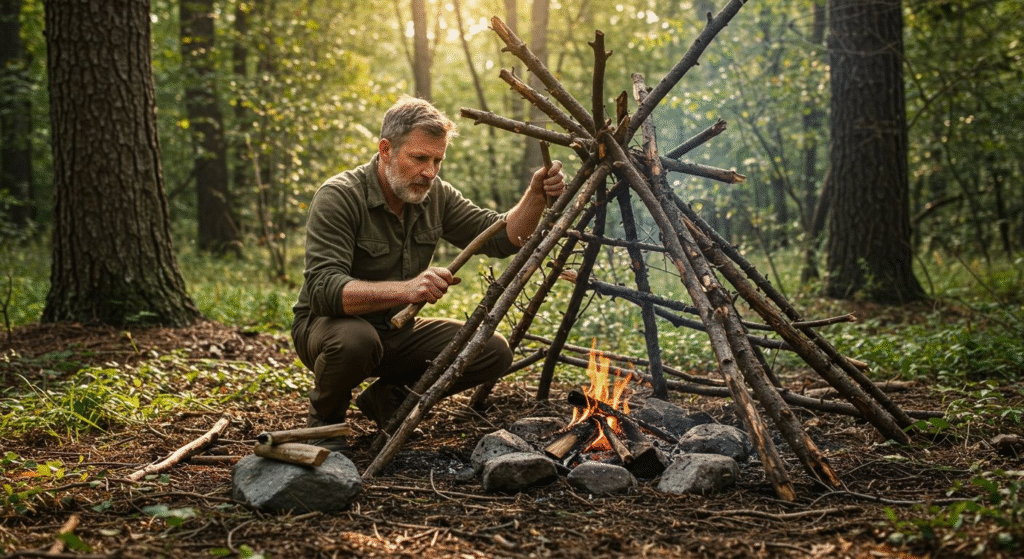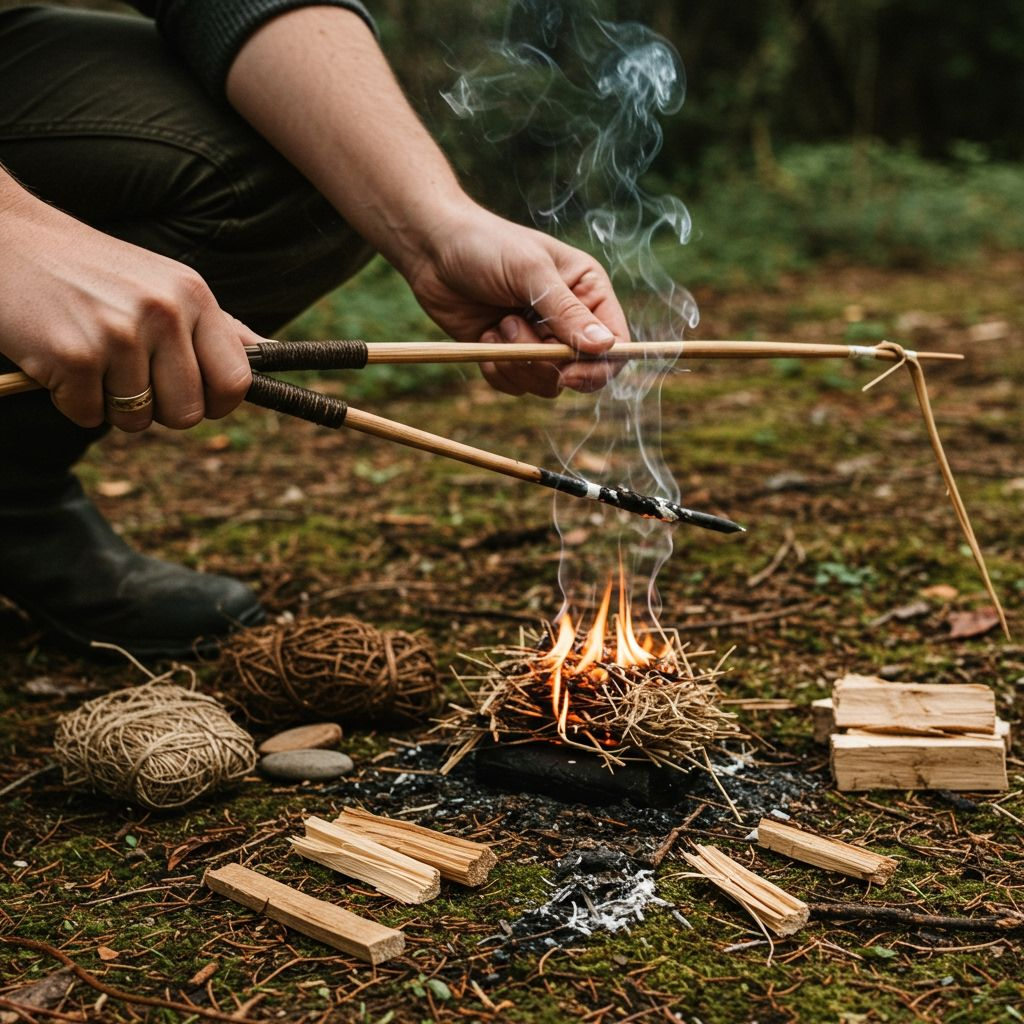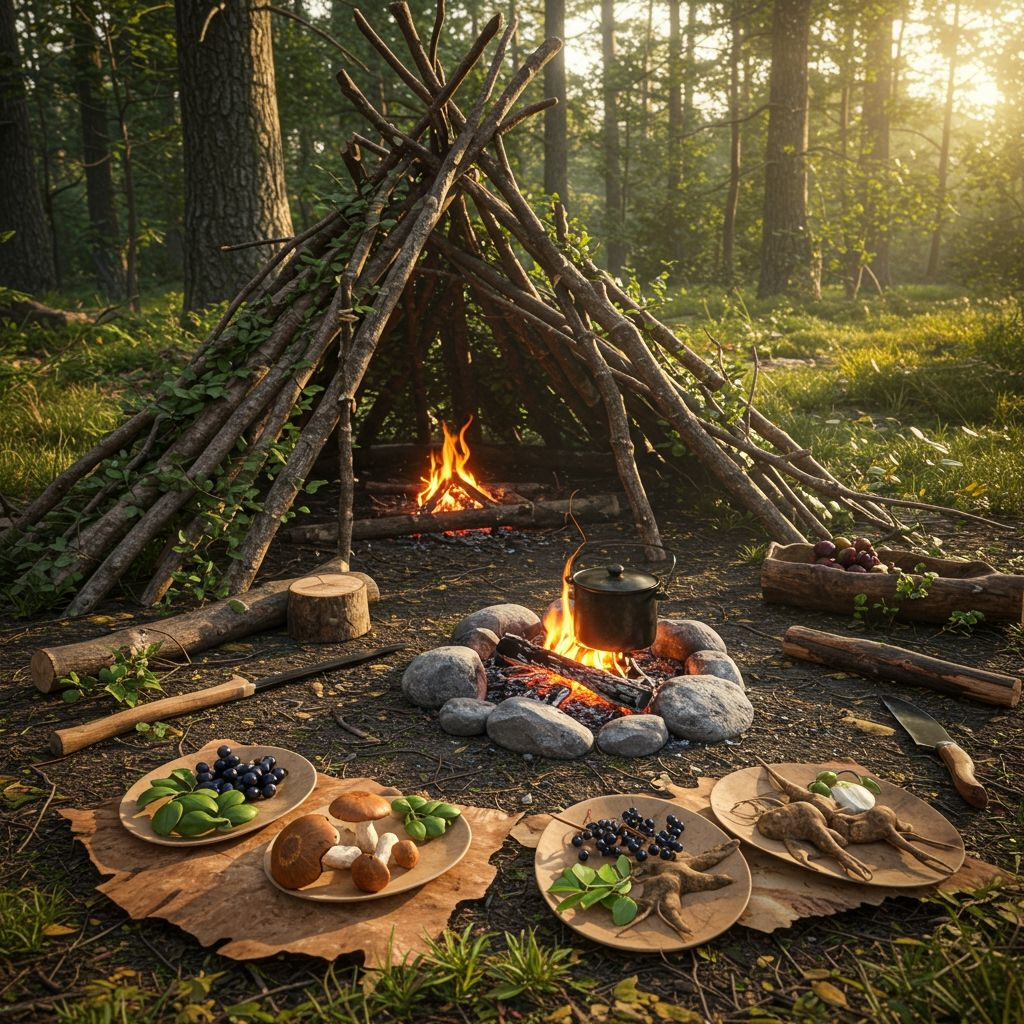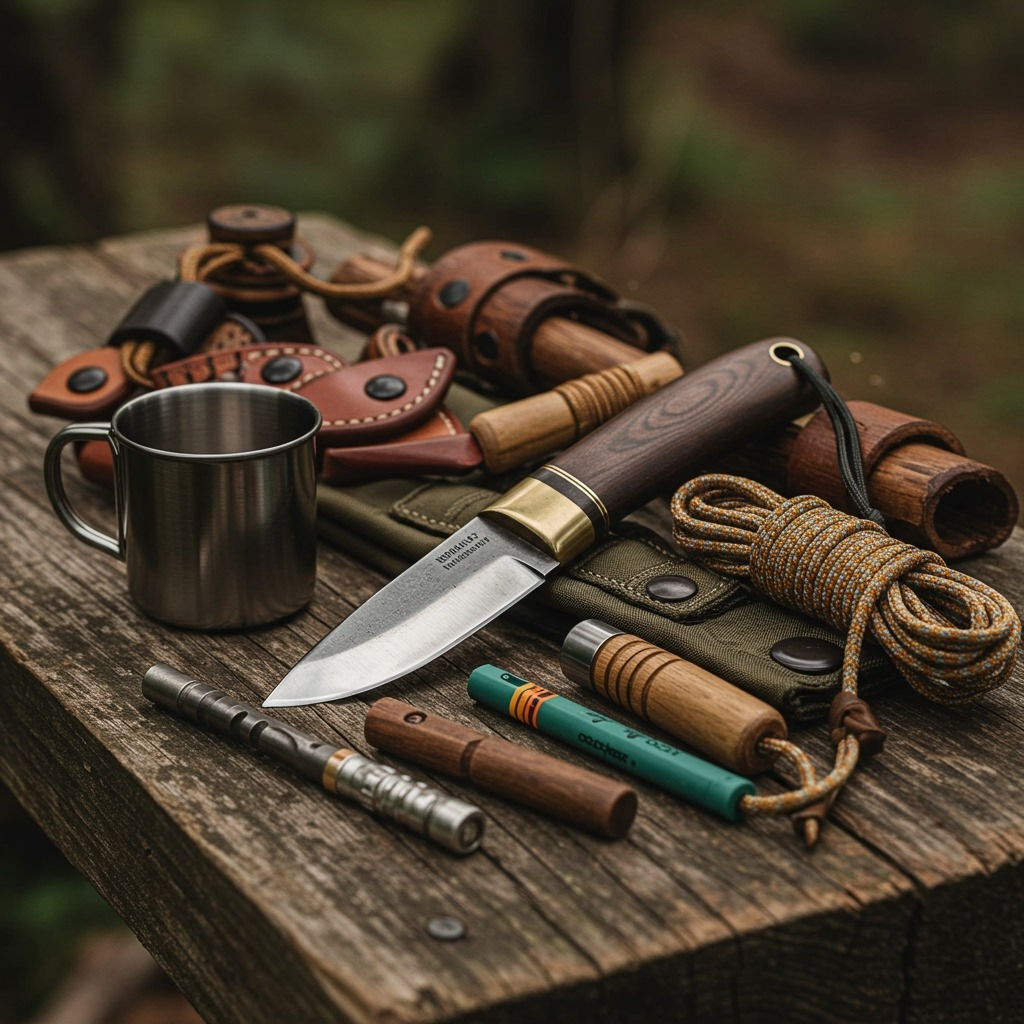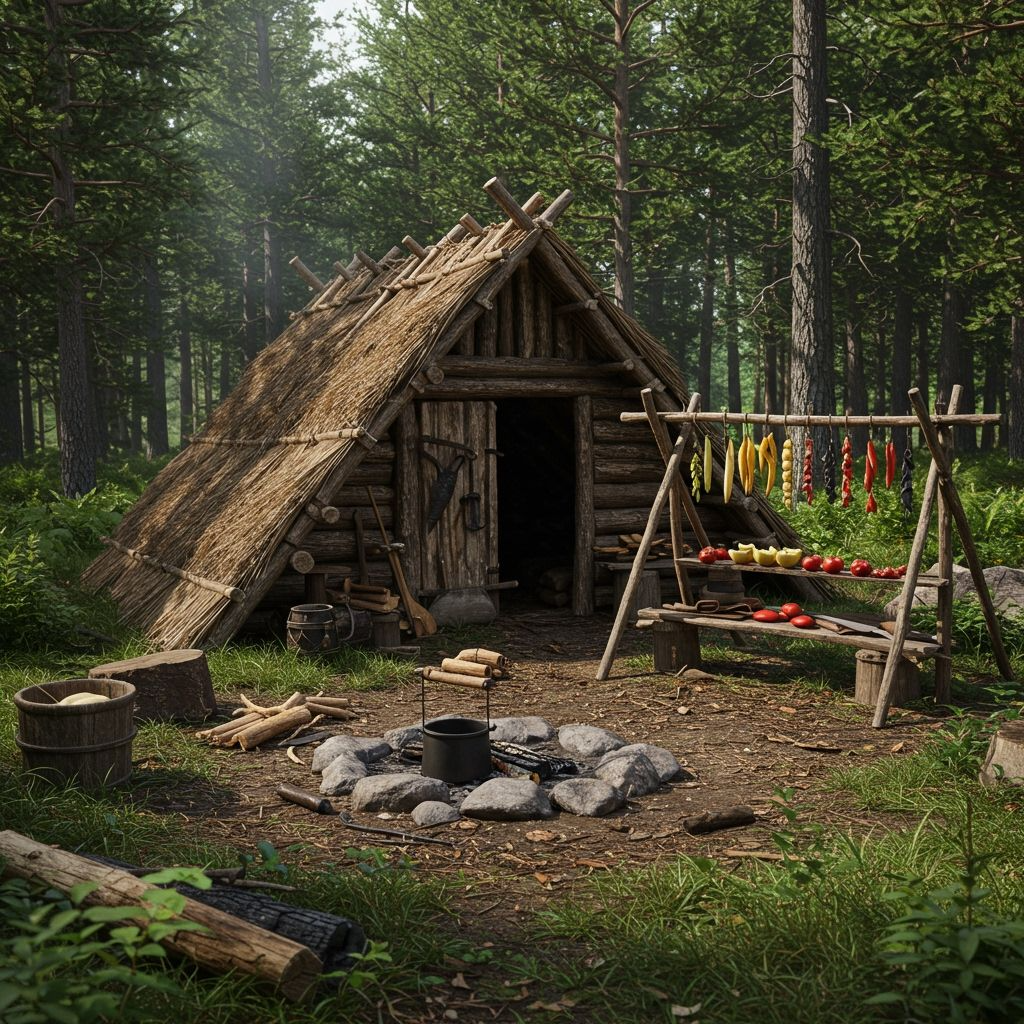The first time I spent a night in the woods with nothing but a knife, a tarp, and my own skills, I learned more about myself than any luxury camping trip had ever taught me. There I was, crouched next to a fire I’d started with flint and steel, eating fish I’d caught with a hand-carved spear, sleeping under a shelter built from fallen branches and forest debris. It was raw, challenging, and absolutely transformative.
Bushcraft camping strips away the modern conveniences we’ve grown accustomed to and reconnects us with the fundamental skills our ancestors used to survive and thrive in the wilderness. It’s not just camping—it’s a complete immersion into primitive living that challenges every assumption you have about what you actually need to be comfortable outdoors.
Whether you’re seeking a deeper connection with nature, want to test your survival skills, or simply crave an adventure that pushes your boundaries, bushcraft camping offers one of the most rewarding outdoor experiences available. Here’s everything you need to know to start your journey into the ancient art of living off the land.
What Is Bushcraft Camping?
Bushcraft camping is the practice of using traditional wilderness survival skills to live comfortably in nature with minimal modern equipment. Unlike regular camping, where you bring tents, stoves, and processed food, bushcraft camping relies on your ability to create shelter, make fire, find water, and procure food using only basic tools and natural materials.
The philosophy behind bushcraft goes beyond mere survival—it’s about thriving in the wilderness through knowledge, skill, and respect for nature. Where survival focuses on short-term emergency situations, bushcraft emphasizes sustainable, long-term living in harmony with the natural environment.
Core Principles of Bushcraft Camping
Self-Reliance: Depending on your skills rather than gear to meet basic needs
Minimal Impact: Using natural resources responsibly without damaging ecosystems
Traditional Skills: Employing time-tested techniques passed down through generations
Deep Connection: Developing an intimate understanding of natural systems and cycles
Bushcraft vs Traditional Camping
| Aspect | Traditional Camping | Bushcraft Camping |
| Shelter | Tent or RV | Hand-built from natural materials |
| Fire | Gas stove or matches | Friction fire or flint and steel |
| Food | Pre-packaged meals | Foraged, hunted, or caught |
| Water | Bottled or filtered | Collected and purified naturally |
| Tools | Modern gear | Handmade implements |
| Duration | Weekend trips | Extended stays |
| Skill Level | Basic outdoor knowledge | Advanced survival skills |
| Philosophy | Comfort in nature | Living as part of nature |
Essential Bushcraft Skills Every Beginner Needs
Fire Making Without Matches
Fire is the cornerstone of bushcraft camping, providing warmth, cooking capability, water purification, and psychological comfort. Learning to create fire without modern conveniences is perhaps the most critical skill you’ll develop.
Friction Fire Methods:
- Bow drill: Most reliable primitive fire method
- Hand drill: Requires excellent technique and dry conditions
- Fire plow: Good for specific wood types
- Fire piston: Advanced technique using compression
Spark-Based Methods:
- Flint and steel: Traditional European method
- Ferro rod: Modern but reliable backup option
- Magnifying glass: Harnesses solar energy for ignition
The key to successful primitive fire-making lies in preparation. Gather tinder (bird’s nest of fine, dry material), kindling (pencil-thin to thumb-thick dry sticks), and fuel wood (progressively larger pieces) before attempting ignition.
Understanding how to make cowboy coffee over an open fire becomes valuable once you master fire creation techniques.
Shelter Construction
Building an effective shelter using only natural materials requires understanding basic engineering principles and local resources. Your shelter must protect against wind, rain, and temperature extremes while remaining breathable and comfortable.
Fundamental Shelter Types:
Debris Hut
The most versatile primitive shelter, constructed by creating a ridgepole framework and covering it with thick layers of leaves, pine needles, and other insulating debris. Proper construction can keep you warm even in freezing temperatures.
Lean-To Shelter
Simple three-sided structure built against a natural windbreak like a large fallen log or rock face. Easy to construct, but offers limited protection from wind and rain.
A-Frame Shelter
More complex but highly effective design that sheds water well and provides excellent wind protection. Requires more time and skill to construct properly.
Water Location and Purification
Clean water is essential for survival, but natural sources often contain harmful bacteria, parasites, and viruses that can cause serious illness.
Water Sources:
- Springs and moving water (generally safer than stagnant pools)
- Morning dew collected on the cloth and was wrung out.
- Tree sap from certain species (birch, maple)
- Rainwater caught in clean containers.
Natural Purification Methods:
- Boiling over fire (most reliable method)
- Solar disinfection using clear containers and sunlight
- Charcoal and sand filtration systems
- UV sterilization with clear water bottles
Food Procurement
Bushcraft camping involves multiple methods of obtaining food, from foraging and trapping to fishing and hunting, where legal and appropriate.
Foraging Fundamentals:
Understanding local edible plants requires extensive study and absolute certainty—mistaken plant identification can be fatal. Start with easily identified species like dandelions, plantain, and wild berries.
Fishing Techniques:
Primitive fishing methods include crafting hooks from bones or thorns, creating traps from woven branches, and spear fishing in clear, shallow water.
Small Game Procurement:
Simple snares and deadfall traps can provide protein, but always check local regulations and practice ethical hunting methods.
For those interested in expanding their outdoor cooking skills, learning about easy camping meals for families provides ideas adaptable to bushcraft cooking methods.
Essential Bushcraft Tools and Gear
The Minimalist Toolkit
Unlike traditional camping, bushcraft emphasizes carrying as little modern equipment as possible. Your basic kit should include only items that cannot be easily created in the field.
Primary Tools:
- Fixed-blade knife: Your most important tool for cutting, carving, and food preparation
- Ferro rod: Reliable fire starting backup
- Steel cup or pot: For boiling water and cooking
- Cordage: Paracord or natural fiber rope for construction projects
Optional Items:
- Small hatchet or saw for processing larger wood
- Tarp for emergency shelter or ground cover
- First aid kit with basic medical supplies
- Water purification tablets as backup
Tool Crafting Skills
Part of bushcraft’s appeal lies in creating your own tools from natural materials. These skills connect you directly with traditional crafts while providing practical implements.
Essential Carving Projects:
- Eating utensils (spoons, bowls, chopsticks)
- Fire-making components (bow drill sets, fire boards)
- Cordage from plant fibers
- Simple containers from bark or gourds
Advanced Projects:
- Baskets from woven plant materials
- Pottery from clay-rich soil
- Stone tools through knapping
- Hunting implements like spears and arrows.
Planning Your First Bushcraft Adventure
Start Small and Build Experience
Bushcraft camping isn’t something you should attempt without proper preparation and gradual skill building. The wilderness is unforgiving of mistakes, and overconfidence can quickly turn adventure into an emergency.
Progression Strategy:
- Day trips: Practice individual skills in controlled environments
- Overnight near home: Test abilities with easy escape routes
- Weekend adventures: Combine multiple skills in extended scenarios
- Multi-day expeditions: Only after mastering fundamental techniques
Location Selection
Choose your first bushcraft camping location carefully, prioritizing safety and legality over remoteness and challenge.
Ideal Characteristics:
- Legal camping area with bushcraft activities permitted
- Access to clean water sources
- Abundant dead wood for fire and construction
- Varied terrain offering different resource opportunities
- Reasonable distance from emergency services
Understanding what primitive camping means helps you find appropriate locations that allow bushcraft activities.
Safety Considerations
Bushcraft camping carries inherent risks that don’t exist in traditional camping. Proper preparation and safety protocols are essential.
Emergency Preparedness:
- Inform someone of your plans and expected return
- Carry an emergency communication device if possible.
- Know basic first aid and wilderness medical techniques.
- Have evacuation plans for various emergency scenarios
Risk Management:
- Never attempt bushcraft camping alone until highly experienced.
- Weather awareness and preparation for changing conditions
- Wildlife knowledge and food storage protocols
- Tool safety and proper cutting techniques
Seasonal Bushcraft Considerations
Spring Bushcraft Challenges
Spring offers abundant water and emerging plant foods but presents challenges with variable weather and muddy conditions.
Spring Advantages:
- Increased water availability from snowmelt and rain
- Early wild edibles like wild onions and young greens
- Moderate temperatures are ideal for learning new skills
- Wildlife activity increases, improving hunting/fishing opportunities.
Spring Challenges:
- Unpredictable weather patterns
- Wet conditions make fire starting difficult
- Muddy terrain complicates shelter construction.
- Insect populations are beginning to emerge.
Summer Bushcraft Opportunities
Summer provides the most forgiving conditions for beginners, with warm temperatures, long daylight hours, and abundant natural resources.
Summer Benefits:
- Warm weather reduces shelter and fire requirements.
- Peak availability of wild foods and medicines
- Long daylight hours allow more skill practice.
- Dry conditions simplify fire starting and construction.
Summer Precautions:
- Heat management and hydration needs
- Increased fire danger in dry regions
- Peak insect activity and disease vectors
- Thunderstorm and severe weather awareness
Fall Bushcraft Rewards
Fall offers some of the best bushcraft camping conditions, with comfortable temperatures, reduced insects, and abundant wild foods.
Fall Highlights:
- Nut harvests provide high-energy foods
- Comfortable temperatures for physical activities
- Reduced insect populations
- Excellent weather stability
Winter Bushcraft Mastery
Winter bushcraft represents the ultimate challenge, requiring advanced skills and extensive preparation. Mistakes in winter conditions can quickly become life-threatening.
Winter Requirements:
- Expert-level fire starting abilities
- Advanced shelter construction techniques
- Cold-weather clothing and insulation systems
- Emergency signaling and rescue capabilities
For those planning winter adventures, understanding how to stay warm while camping becomes critical for safe cold-weather bushcraft experiences.
Building a Bushcraft Community
Learning Resources
Books and Guides:
Traditional bushcraft knowledge has been documented in numerous excellent resources that provide step-by-step instruction for essential skills.
Online Communities:
Forums, social media groups, and video platforms offer opportunities to connect with experienced practitioners and share learning experiences.
Local Instruction:
Seek out local bushcraft schools, primitive skills gatherings, and experienced mentors who can provide hands-on instruction and safety oversight.
Sharing Knowledge Responsibly
As you develop bushcraft skills, consider how to share knowledge while protecting natural resources and respecting indigenous traditions.
Ethical Guidelines:
- Practice Leave No Trace principles in all activities.
- Respect private property and obtain proper permissions.
- Honor the indigenous origins of traditional techniques.
- Teach sustainable practices that preserve resources.
Advanced Bushcraft Techniques
Long-Term Habitation
Extended bushcraft stays require more sophisticated skills and infrastructure development.
Advanced Shelter Systems:
- Log cabin construction techniques
- Clay and stone hearth building
- Food storage and preservation methods
- Waste management and sanitation systems
Primitive Technology
Tool Making:
- Stone knapping for cutting implements
- Pottery creation from natural clays
- Metalworking using primitive forges
- Woodworking with traditional joinery
Textile Production:
- Fiber processing from wild plants
- Cordage creation from various materials
- Basic weaving and basketry techniques
- Hide preparation and leather working.
Conservation and Ethics
Sustainable Practices
Bushcraft camping done responsibly leaves minimal environmental impact while providing deep learning experiences.
Resource Management:
- Harvest only what you need and can use completely
- Rotate harvesting areas to prevent overuse.
- Focus on abundant species rather than rare ones.
- Learn carrying capacity limits for different ecosystems.
Legal Considerations
Many bushcraft activities require specific permissions or are prohibited in certain areas.
Research Requirements:
- Public land regulations and permit requirements
- Private landowner permission for activities
- Seasonal restrictions on hunting, fishing, or gathering
- Fire restrictions and burn bans
FAQ: Bushcraft Camping Essentials
Is bushcraft camping safe for beginners?
Bushcraft camping carries inherent risks and should not be attempted without proper training and gradual skill development. Start with day trips and progress slowly under experienced guidance.
What’s the most important bushcraft skill to learn first?
Fire making is generally considered the most critical skill, as it enables water purification, cooking, warmth, and psychological comfort. Master multiple fire-starting methods before attempting overnight trips.
How much gear should I bring on a bushcraft trip?
True bushcraft emphasizes minimal gear—typically just a knife, fire starting tool, metal container, and cordage. However, beginners should carry safety backups like emergency shelter, water purification tablets, and first aid supplies.
Can I practice bushcraft camping anywhere?
No, many locations prohibit bushcraft activities like shelter building, fire making, or foraging. Research regulations carefully and obtain proper permissions before practicing these skills.
How long does it take to become proficient at bushcraft?
Basic competency in fundamental skills typically requires months of practice, while true expertise can take years to develop. The learning never really stops, as each environment and season presents new challenges.
Ready to begin your bushcraft journey? Start by practicing individual skills in safe, controlled environments before attempting full bushcraft camping experiences. Remember that this ancient way of living requires patience, respect for nature, and commitment to learning from both successes and failures.
The path to bushcraft mastery is long but incredibly rewarding, offering a deep connection with nature and confidence in your ability to thrive with minimal resources. Every skill learned brings you closer to understanding how our ancestors lived and thrived in harmony with the natural world.
External Resources:
- Paul Kirtley’s Bushcraft Blog for expert techniques and equipment advice
- Primitive Ways for traditional skills and historical context
More outdoor adventures on RichardsDiary:
The wilderness is calling—answer with skills, knowledge, and respect for the natural world that sustains us all.

